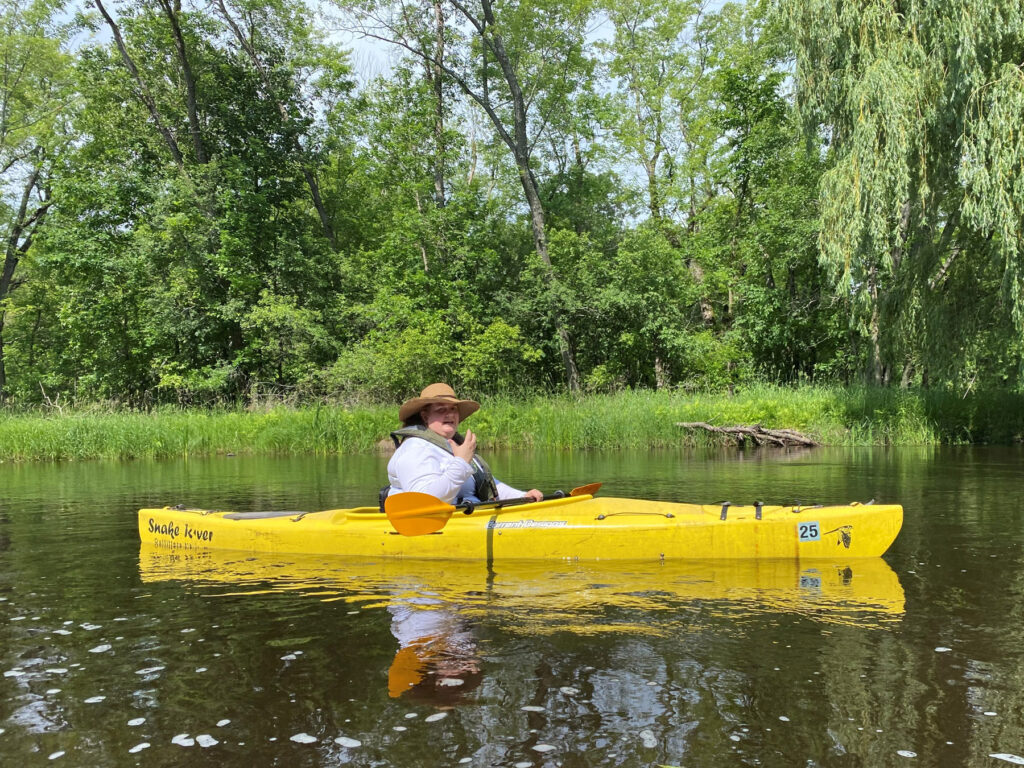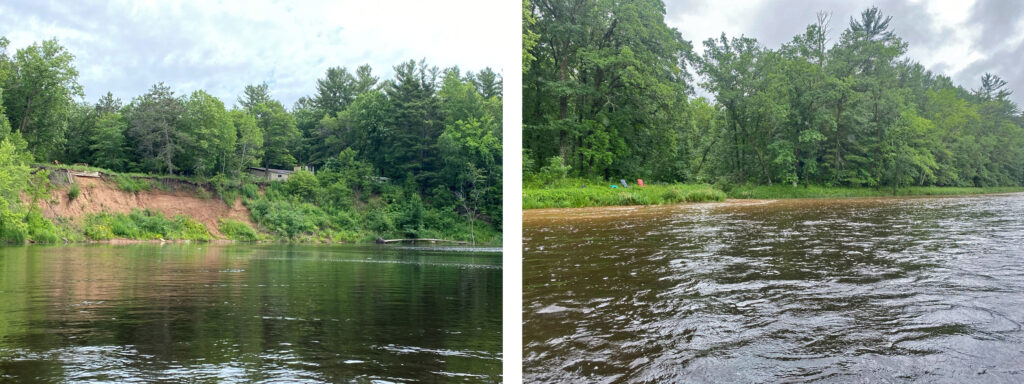Freshwater recently completed a short project funded by the Snake River Watershed Board (Aitkin, Mille Lacs, Kanabec and Pine county commissioners) to help orient their new watershed coordinator, Mary Poelman, and other soil and water conservation district (SWCD) staff in the watershed. The Board approves the projects recommended by SWCD staff and funds them with State dollars to achieve the water quality goals agreed upon in their One Watershed One Plan. Freshwater’s goal is to help ensure that Minnesota’s conservation funds are spent on resilient projects.
Mary was new to Minnesota, having moved from Nevada, and wanted to build a landscape understanding of the watershed. She and Freshwater Research and Policy Director Carrie Jennings canoed or kayaked 40 miles of the Snake River Water Trail and talked about how geological events impact river processes in this glaciated watershed.

Rivers adjust their gradients and channel form to changes in flow and local base level. The ongoing response of a river and its tributaries to events dating to the last glacial period is inexorable. This geological history influences which human modifications to the land and water will be resilient. In other words, projects that work against the river’s natural evolution will result in wasted conservation dollars.
By appreciating the constraints of seemingly distant geologic events, land and water conservation professionals, residents, and zoning officials can learn to align their efforts with the course that the river and its watershed are on for the best return on investment.

Freshwater had previously submitted an LCCMR proposal called “Think Like a Geologist” to orient SWCD staff working in similar geologic terranes. It was not funded, but with this successful pilot in the Snake River watershed, we are talking to the Minnesota Board of Water and Soil Resources (BWSR) about how we might assist others in this capacity. There are 81 major watersheds across the state, of which 54 have approved plans, and 35 have state water trails – so prioritization of project work is important to improving Minnesota waters.